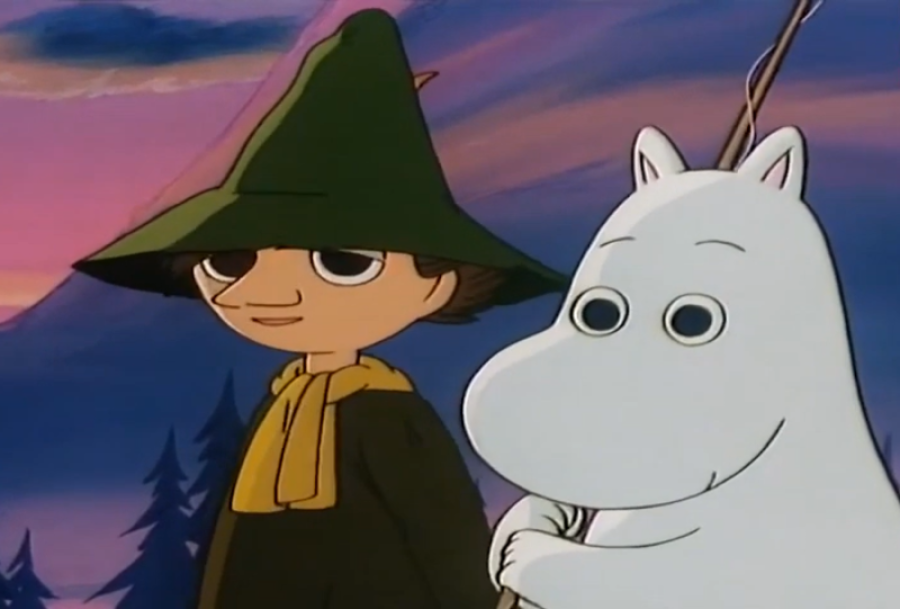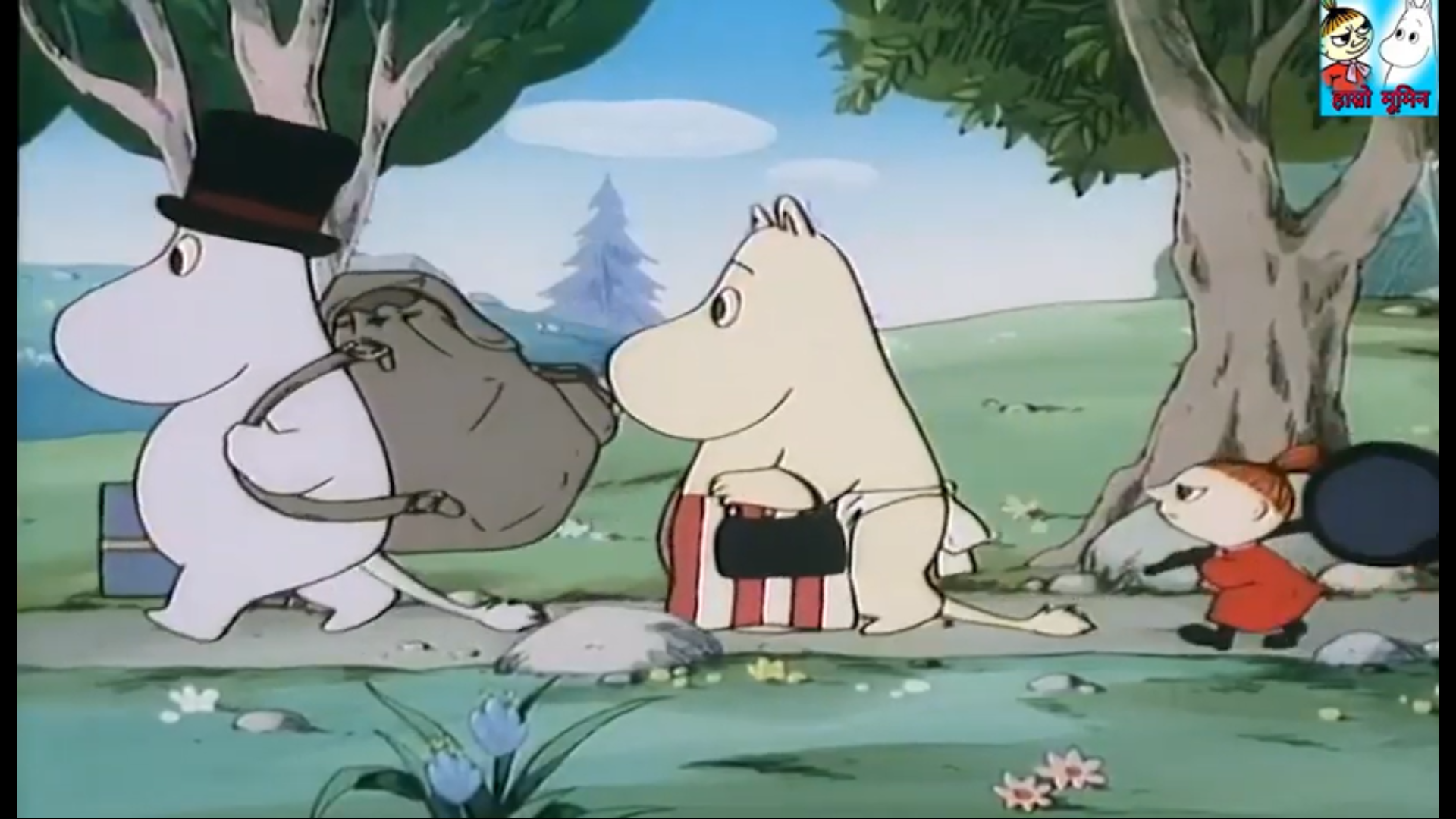Culture & Lifestyle
How the Moomins made their way into the hearts of Nepalis
It has been almost two decades since the last Moomin episode aired on Nepal Television, and the characters still vividly capture the public imagination.
Abhaya Raj Joshi & Michaela von Kügelgen
“There’s something familiar about your voice. It’s like I’ve heard it before.”
Many who visited him at this office in Lalitpur often told him this, says Binod Giri. Giri, who until recently worked at the government-run Agriculture Information and Training Centre, says he first tries to assess if the person speaking was in their late 20s or older than that. Only then he answers.
To the older lot, he is the voice of the sidekick of the famous Krisi Budhi Aama (agriculture grandmother in English), who has been on air on Radio Nepal for over five decades. “But to the kids of the ’90s, I am Moomin Baba,” he says, with a grin.
Giri likes it better when he gets the opportunity to talk to a ’90s kid, as the conversation sends him down memory lane and gives him a chance to relive being the voice of the beloved patriarch of a family that had captured the imagination of thousands of children across Nepal. But it’s not just him and the people who visit him that fondly remember the Moomins, a Finnish show that was translated into Nepali. A quick YouTube search for “Moomins in Nepali” yields hundreds of videos with thousands of likes and comments of fans asking when the show will return on television—almost two decades since the last episode aired.
But how the beloved Moomins arrived in Nepal is a story on its own. It started in 2001 when Giri was approached by director Deependra Gauchan, whom he had worked with on various projects, including the critically acclaimed series Ujeli on Nepal TV that dealt with the story of child marriage.
Then, Nepali television was attempting to diversify its content but there was a dearth of children’s programmes in Nepali. And Gauchan, who along with his friends started an animation studio in Kathmandu in the late 90s, wanted to bring in some fresh content on national TV. As Gauchan had already worked with Giri, he decided to entrust him with the responsibility of starting Moomin in Nepal, taking up the role of the narrator and selecting artists to voice the other characters.
“Binod has this very calming kind of baritone voice,” says Gauchan, which was exactly what he needed.
But while the Moomins were getting their Nepali voices in Kathmandu, Tove Jansson, the creator of the famous Finnish creatures, was in her final days. Jansson, a Swedish-speaking Finnish author, novelist, painter, illustrator and comic strip author, died on June 27, 2001, in Helsinki.
The Moomins, a happy-go-lucky family of bare-feet and long-tailed beings living in the fictional Moomin Valley, were born out of her imagination and her life experiences. Moomin Papa (Moomin Baba in the Nepali version) and Moomin Mama (Moomin Aama in the Nepali version) raise their only child Moomin, whose friends, such as the feisty Little My (Sanumaya in Nepali), the calm and composed Snufkin and the always hungry Sniff, add spice to their lives. Then there’s Snork Maiden, Moomin’s supposed romantic interest, and her brother Snork.
Over almost five decades, the characters swiftly gathered fans across Finland and beyond. Among these fans was Dennis Livson, who harboured a dream to produce an animation series with the Moomins. It was around the ’80s when Livson, who went on to produce the show, started negotiations with Tove and her brother Lars to produce a TV show based on her original work.
“For many years, Livson wrote to Tove and my father Lars requesting them to meet him and discuss the animation project. He once says that he tried to get access to them for 10 years before they finally agreed,” says Sophia, Jansson’s niece who is now the creative director at Oy Moomin Characters, the company that holds the copyright for her work.
The show Livson went on to later produce was targeted at pre-school children and has now been broadcast in over 100 countries in different languages.
Meanwhile, Leena Vihtonen, a Finnish journalist and trainer, who along with her husband Erkki had first come to Nepal in the ’80s to train Nepali professionals to kick start Nepal’s state TV, too wanted to bring the stories they grew up with in Finland to Nepal. “Tove was in a terribly bad condition,” says Vihtonen. “We would have liked to meet her, but we couldn’t. We got in contact with Dennis Livson through the Moomin Characters company,” she added.
The Vihtonens, through their connections with the Finnish state broadcaster YLE and the foreign ministry, managed to secure the licenses to dub the series in Nepali. Luckily, around the time, the Japanese government donated a dubbing station to Nepal TV, and a Finnish expert connected to the Vihtonens taught them how to use it.
After working on the script for a few weeks, director Gauchan and his wife Beena, with whom the Vihtonens had worked on a mini TV series called ‘Guhar’ before, were ready to cast the characters. “As the show was for children, we wanted to get children to voice the characters in Nepali,” Giri told the Post. However, as children are occupied with their school work, and they also need to be taught dubbing techniques, they decided to get adults with “child-like” voices to voice the characters.
“I took on the toughest job of voicing two-three characters,” remembers Giri. “I had to voice the narrator, Moomin Baba, and the Hemulen (Hemulen Ba in Nepali). The biggest challenge was to make the audience feel the difference when Moomin Baba and Hemulyin Ba were talking to each other.” Despite the challenges, production of 26 episodes of the show was completed.

When the Nepali-speaking Moomins went on air, the makers didn’t know how the audience would respond to it, but they were confident that it would not go unnoticed. “We told our friends and family to watch this show and give us feedback,” says Giri. The team even invited a group of children from a school in Kathmandu to the studio to watch the first few episodes and look at their reaction.
The language used was very casual and conversational—hitherto not seen on TV. “The show’s appeal was its simplicity and the depth of its characters,” says Giri. “The characters were so innocent and lovable.”
But as this was during the pre-audience metrics and social media days in Nepal, it was difficult for the team to assess its success. “That’s why we had to rely on asking around,” he says.
During the first few weeks, the response was lukewarm, but people started taking notice after stories on the series were published in the newspapers, says Gauchan. The series became a hit, and has continued to generate interest among Nepalis in their 20s and 30s who were kids when the show was aired.
“I have so many fond memories about the show,” says Giri. “There were numerous times when kids of my relatives would try to imitate Moomin and other characters. As they didn’t know I was ‘Moomin Baba’, I would look at them and smile.”
The Vihtonens, meanwhile, saw first-hand how popular the series was in rural Nepal. “When we were out shooting at a village outside Kathmandu, local kids would swarm around our camera and this made our job difficult,” says Vihtonen. On days the show aired, they could hardly find any kids out in the village. “All of them would be watching the Moomins on TV,” she added.
Nepal TV had to air a couple of reruns of the series after getting an overwhelming response from the audience. But no one remembers if all the episodes of the series were aired or not.
Twenty-odd years on, fans still continue to look for the Nepali Moomins on platforms such as YouTube and Facebook. “Even after so many years, people approach me to talk about the Moomins,” says Giri. “When people remember one’s work for so many years, it gives the person a deep sense of satisfaction, a sense of having accomplished something,” he adds.
Despite its popularity, it is unlikely that the Nepali Moomins will come back to the screen anytime soon. “As Nepal TV has now gone digital, it can no longer air content recorded on analogue tapes. It would take a lot of effort to digitise the whole series,” says Giri. Also, the copyright holders only allowed the show to be aired only a few times.
Many people still contact Gauchan frequently to ask if the Moomins will return to Nepali TV. But he doesn’t have a definite answer. “A generation of people in their 20s and 30s have fond memories of the Moomins. They have now become parents and want to share the characters with their children. But they can’t,” he says.
Meanwhile, a new Moomin series in English was released last year. But a Nepali version of the series made by a contractor for Oy Moomin Characters looks far-fetched. “A lot of money has been invested in making the series, and the makers want to sell it to TV stations. A poor country like Nepal wouldn’t be able to afford it,” says Gauchan.
Sophia Jansson from Oy Moomin Characters also believes getting the new series translated in Nepali would be an uphill task as it involves a lot of copyright and financial issues.
“Maybe that we can’t go back in time and watch the series again makes it more special now,” says Giri. “But it’s sad that we can’t watch the series again even if we want to. The option of watching the series in English or other languages is there, but it doesn’t resonate with the Nepali audience in the same way,” he says.
Regardless of the future of the Nepali Moomins, the project cemented ties between Nepal and Finland, says the Vihtonens. “Moomin was the last of our various projects in Nepal, it was its peak and culmination. Despite the distance, we managed to get Finnish cultural heritage to Nepal.”
Tove would have appreciated it as much, says Sophia. “Tove would have also been absolutely delighted that the Moomins are so much loved in Nepal,” she says. “She wrote her stories for ‘you’, and that ‘you’ can be from anywhere, including Nepal.”




 21.12°C Kathmandu
21.12°C Kathmandu
















